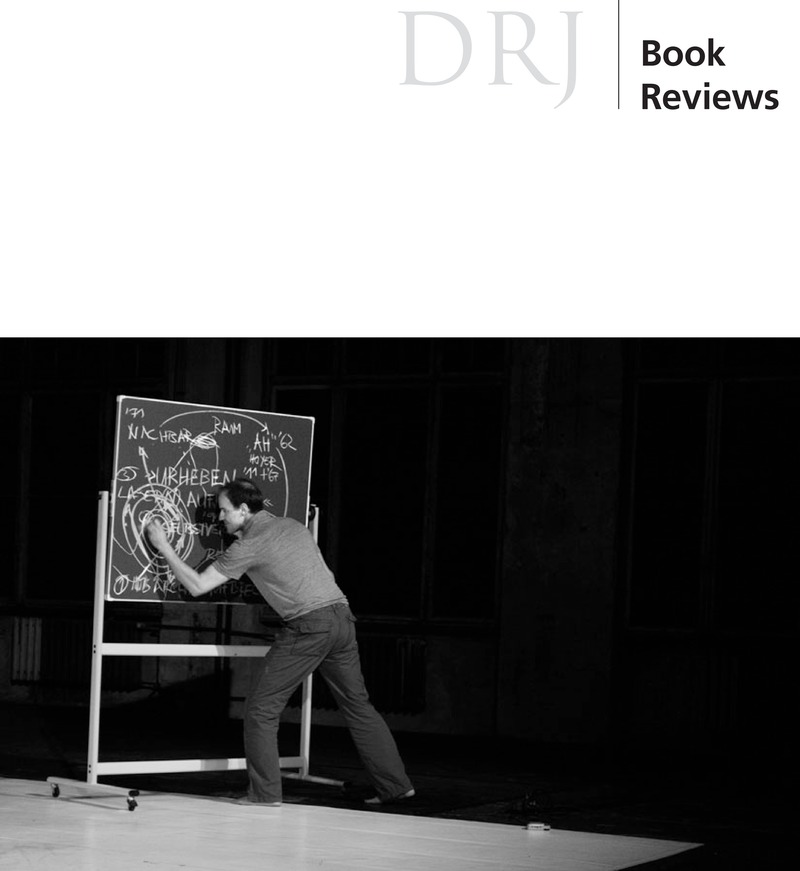No CrossRef data available.
Article contents
La Délivrance de Renaud: Ballet Danced by Louis XIII in 1617. edited by Greer Garden. 2010. Tournhout, Belgium: Brepols. xxi + 291 pp., critical essays, 17 illustrations, facsimile in 68 color illustrations, music notation, translations, index of names. $140 hardcover in English and French.
Published online by Cambridge University Press: 29 August 2012
Abstract
An abstract is not available for this content so a preview has been provided. Please use the Get access link above for information on how to access this content.

- Type
- Book Reviews
- Information
- Copyright
- Copyright © Congress on Research in Dance 2012
References
Works Cited
Baghdiantz McCabe, Ina. 2008. Orientalism in Early Modern France: Eurasian Trade, Exoticism and the Ancien Régime. New York: Oxford University Press.CrossRefGoogle Scholar
Bartels, Emily C. 2008. “Too Many Blackamoors: Deportation, Discrimination and Elizabeth I.” In Speaking of the Moor from Alcazar to Othello. Philadelphia: Pennsylvania University Press, 100–117.CrossRefGoogle Scholar
Careri, Giovanni. 2003. “Aby Warburg: Rituel, Pathosformel et forme intermédiaire.” L'Homme 165: 41–76.CrossRefGoogle Scholar
Cozzarelli, Julia M. 2007. “Torquato Tasso and the Furore of Love, War and Madness.” Italica 84(2–3): 173–186.Google Scholar
Durand, Étienne. 1617. Discours au vray du ballet dansé par le Roy, le dimanche XXIXe jour de janvier 1617, avec les desseins, tant des machines et apparances différentes, que de tous les habits des Masques. Paris: P. Ballard.Google Scholar
Franko, Mark. 1993. Dance as Text: Ideologies of the Baroque Body. New York: Cambridge University Press.Google Scholar
Franko, Mark. 1999. “Jouer avec le feu, la subjectivité du roi dans ‘La Délivrance de Renaud.’” In La Jérusalem délivrée” du Tasse: poésie, peinture, musique, ballet, actes du colloque du Louvre, edited by Careri, Giovanni, 159–78. Paris: Klincksieck.Google Scholar
Franko, Mark. 2003. “Majestic Drag: Monarchical Performativity and the King's Body Theatrical.” TDR 47(2): 71–87.CrossRefGoogle Scholar
Franko, Mark. 2007. “Fragment of the Sovereign as Hermaphrodite: Time, History, and the Exception in Le Ballet de Madame.” Dance Research 25(2): 119–33.Google Scholar
Iyengar, Sujata. 2004. Shades of Difference: Mythologies of Skin Color in Early Modern England. Philadelphia: University of Pennsylvania Press.Google Scholar
McGowan, Margaret. 1982. Le Ballet comique: 1581. Binghamton, NY: Center for Medieval & Early Renaissance Studies.Google Scholar
McGowan, Margaret. 2008. Dance in the Renaissance: European Fashion, French Obsession. New Haven: Yale University Press.Google Scholar
Orgel, Stephen. 1975. The Illusion of Power: Political Theater in the English Renaissance. Berkeley, CA: University of California Press.CrossRefGoogle Scholar
Prunières, Henri. 1914. Le ballet de cour en France avant Benserade et Lully, suivi du ballet de la délivrance de Renaud. Paris: H. Laurens.Google Scholar
Rosenstein, Roy. 1990. “Etienne Durand et les flames de l'amour.” In Poésies completes, critical edition edited by Rogers, Hoyt and Rosenstein, Roy. Geneva: Droz. 1–12.Google Scholar
Thorpe, Jennifer, and Michael, Burden. 2009. Ballet de la nuit: Rothschild B1/16/6. Hillsdale, NY: Pendragon Press.Google Scholar
Van Orden, Kate. 2005. “Violence, Dance and Ballet de Cour.” In Music, Discipline, and Arms in Early Modern France. Chicago: The University of Chicago Press, 81–124.CrossRefGoogle Scholar
White, Hayden. 1973. Metahistory: The Historical Imagination in Nineteenth-Century Europe. Baltimore: Johns Hopkins University Press.Google Scholar




